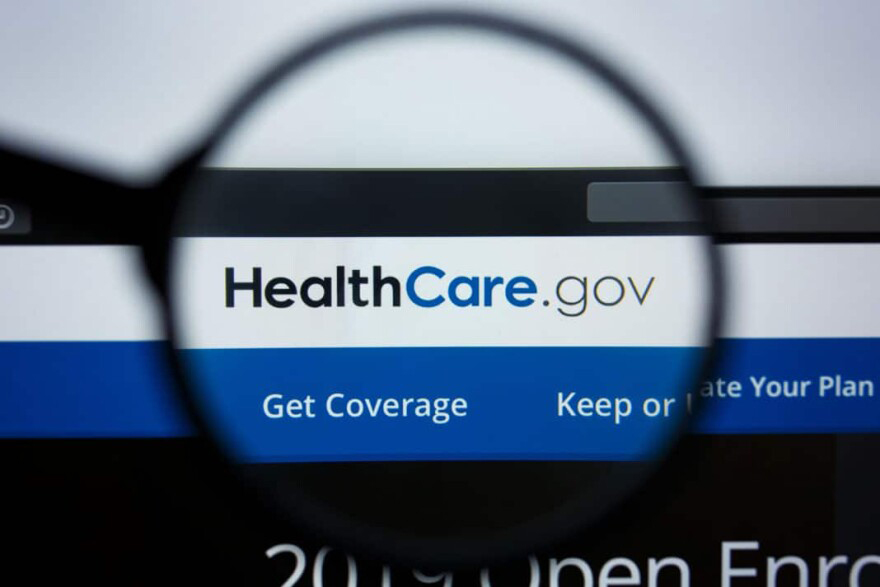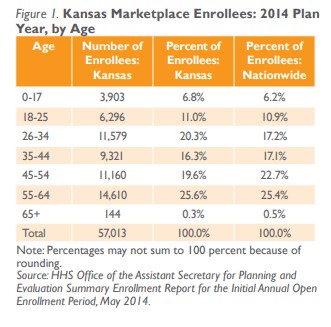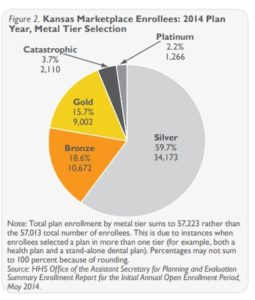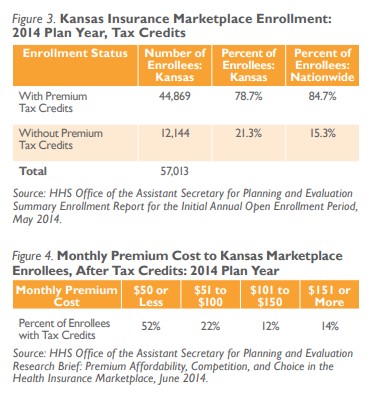The second open enrollment period for the health insurance marketplaces created by the Affordable Care Act (ACA) begins next month. As this approaches, it’s important to look back at results of the first enrollment cycle of the Kansas marketplace, which lasted from Oct. 1, 2013 through March 31, 2014 (with a special enrollment period until April 19, 2014). During that time, 57,013 Kansans used the marketplace to enroll in a health plan. Nationally, 8,019,763 people signed up for health insurance through the marketplaces.
Enrollee Characteristics
Reports from the U.S. Department of Health and Human Services (HHS) on marketplace enrollment show that 99,380 Kansans shopped for insurance through the marketplace and were determined eligible to enroll in a plan. Of those, 57,013 Kansans signed up for coverage.
Almost a third (31.3 percent) of enrollees were between 18 and 34 years old. This number is slightly higher than the national average of 28.1 percent, as shown in Figure 1. This is often noted as an important age demographic since younger adults are generally healthier than their older counterparts, thus the premiums paid by younger enrollees help support the cost of older enrollees.



